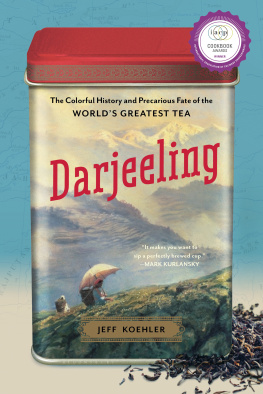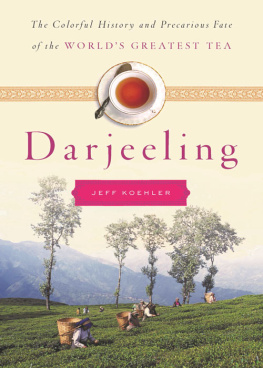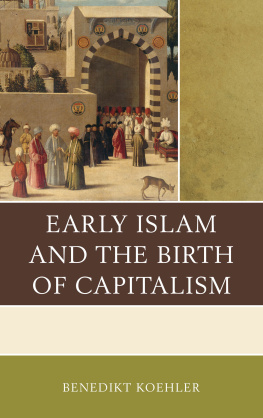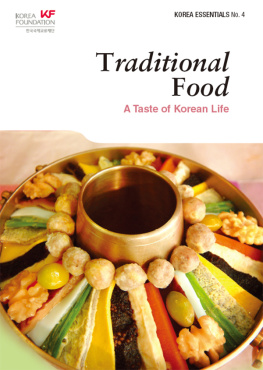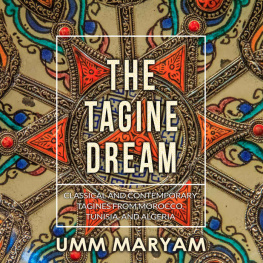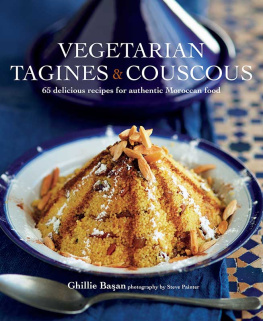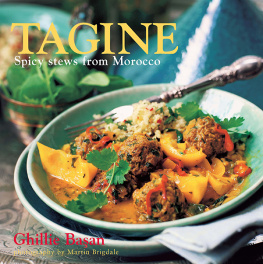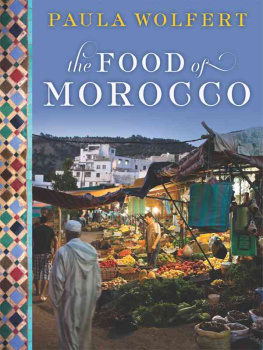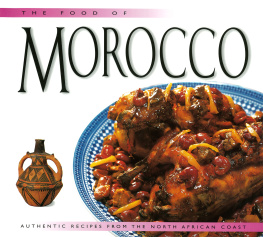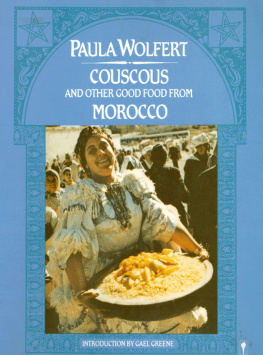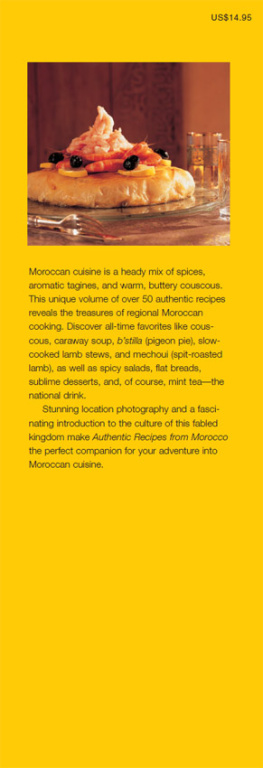The food of Morocco is rich, sensual, and colorful, sophisticated and artfully presented. From the vast array of small plates offering fresh and cooked salads that begin or accompany meals to the delicate sweetmeats (and, inevitably, mint tea), this North African kitchen not only delights but surprises.
It begins with the blending of flavors. The sweetness of chilled cooked carrots countered with earthy cumin, fresh parsley, and intense, unfiltered olive oil. Grated raw carrots soaked in freshly squeezed orange juice with a touch of sugar and a few drops of aromatic orange flower water, served equally as a salad or as a dessert. A pure of cucumbers with orange juice, sweetened slightly with sugar but also a generous pinch of a dried wild oregano called zatarintimating the arid countrysideis a delightfully refreshing drink or dessert on warm afternoons. In winter, glasses of mint tea laced with fresh, silvery absinthe leaves, marjoram, or lemon verbena, even saffron threads. And the main dishes! Braised lamb topped with orange segments soaked in aromatic syrup and with thin, candied strips of peel; kid goat with dried figs and thyme; veal with caramelized apricots and jewel-like prunes. These are inspired, delectable combinations.

One of the countrys most importantand originalcooking methods is the tagine, a stew or ragout slow-cooked in an eponymous earthenware casserole with a conical lid.

The key is the lid, which captures the moisture rising from the cooking meat, poultry, or fish, and enables it to condense on the lids walls, so that it can fall back onto the stew, keeping the dish moist while retaining its flavors.
Tagines frequently exhibit Moroccan cuisines fondness for combining textures and marrying bold flavors, and showcase one of its distinguishing traitsthe harmonious blending of sweet and savory. Take just two of countless examples: chicken topped with caramelized tomato compote and toasted almonds and veal shanks with stewed pears that carry a sweet freshness hinting of cloves, ginger, and cinnamon.
Knives are not found on Moroccan tables tradition, sure, but also because theyre not needed when meat cooks to the falling-off-the-bone tenderness of a typical tagine. Yet as succulent as that lamb or beef or chicken might be, it sometimes seems that the sole purpose of a tagine is the final sauce, the rich melody of concentrated flavors mopped up with hunks of bread.
Couscous is another dish synonymous with Morocco and, like the tagine, is an ancient creation of the indigenous Berbers. The name refers to the dish as well as to the tiny grains made from hard durum wheat (or barley or even ground corn) that are double- or triple-steamed in a basket over simmering, flavorful broth. This simple staple is turned into a traditional, celebrated centerpiece every Friday, when extended families gather around a shared platter of couscous for the weeks most important meal. Topping the mound of tender couscous might be chicken and caramelized onions and raisins along with a scattering of crunchy almonds, seven different vegetables, or large pieces of pumpkin flavored with lamb. Typically served alongside are glasses of rich, slightly acidic buttermilk called lben.
Moroccan cuisine remains centered around such family meals. In a small village in the Ourika Valley, on the western slopes of the High Atlas, a young Berber woman explained to me how her family eats a tagine nearly every day, It is placed in the center of the table for the whole family. One table, one dish. It is unacceptable to eat apart.
Eating is not an individual experience, echoed a friend from the agricultural heartland between Fs and Marrakech. Everyone is equal when eating. Its about sharing. Along with that sense of community over a meal, he continued, there is a close connection to the food. People usually eat with their [right] handusing bread, making balls of couscous. Its about touching the food, feeling it.
For many, that connection begins by shopping in the small markets along crowded lanes; from the butcher or fishmonger, the vendor of couscouses and flours, of olives and preserved lemons, of fresh herbs; from neighborhood hanouts (shops), often tiny but packed with a huge array of items on their shelves; or, in the large cities, in enormous supermarkets. Remaining strong, even vital, is the tradition of the weekly souq that gathers together fruits and vegetables, spices, livestock, and whatever else might be bought, sold, or traded. In the countryside, and especially at crossroads townsOuazzane in the north, Agdz in the Dra Valley, Tiznit and Guelmim in the southsprawling, weekly markets gather on the outskirts and draw thousands from the region to the selection of products brought in from the countryside: heaps of yellow melons dabbed with identifying markers of paint, papery purple red onions, clementines, boxes of sticky dates, mounds of small, pointed almonds and dried turmeric roots. There is an enclosed section for livestocklive sheep and goats, chicks and chickens, and in the south, at the famous Guelmim market, camels (not for transport, but meat).
Seafood is abundant in this meat-rich country. The lengthy seacoasts offer sardines, sea bream, turbot, sole, conger eel, mackerel, swordfish, and tuna, crab, shrimp, lobster, and oysters. Fish is often marinated in charmoulaa lively blend of fresh parsley and cilantro, garlic, cumin, sweet paprika, lemon juice, and olive oiland then fried, cooked in a tagine, or stuffed with chopped tomatoes, fleshy violet-colored olives, and preserved lemons and baked. Grilled sardines are a coastal street food favorite. Generously sprinkled with sea salt and set just above embers, theyre cooked for a couple of minutes on each side until the skin blackens and buckles, and devoured while barely cool enough to handle. The flavors are at their robust finest, the flesh sparkling and briny and shaded with smoky oils.
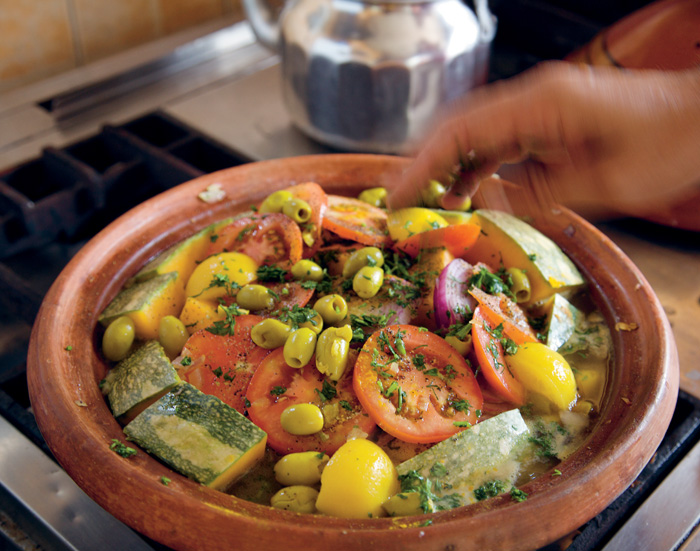
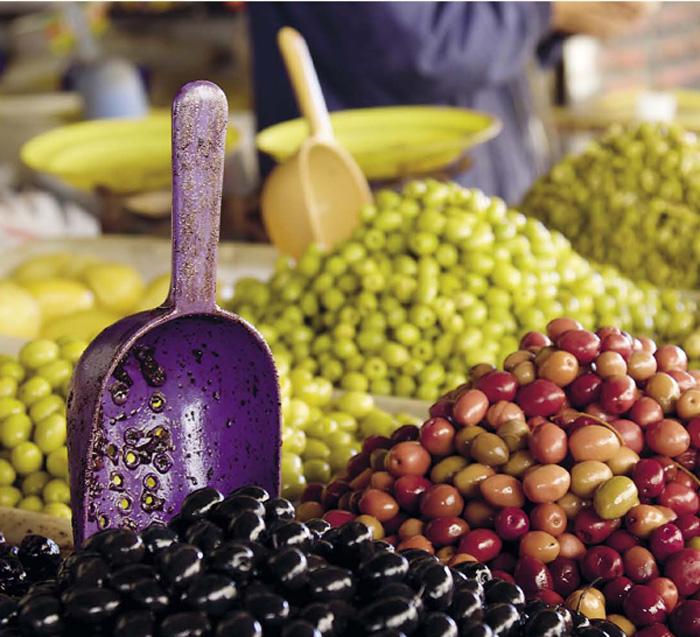
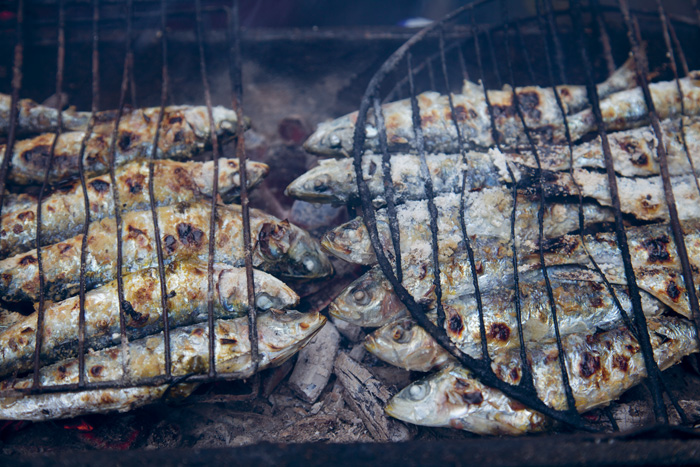
Rarely, though, are flavors as straightforward as grilled sardines. Moroccan cooks draw liberally from an ample spice box: ginger, saffron, cinnamon, and cumin are just four favorites among many. They blend spices with finesse and use a generous hand with fresh herbsparsley, cilantro, and mint. Aromatic


